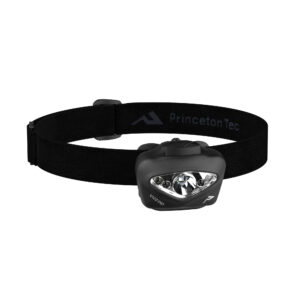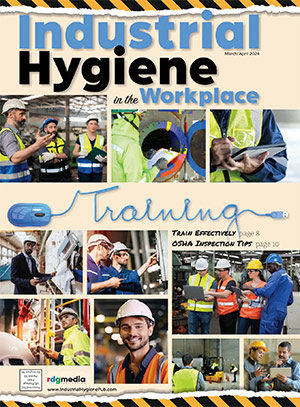Versatile Emergency Lighting Vital to Utility Crews
A variety of advanced task lighting options can significantly improve the safety and efficiency of utility crews and first responders during outages and disasters

Princeton Tec’s industrial-grade VIZZ series headlamps provide powerful, lasting, reliable, hands-free illumination.
When natural disasters occur, linemen and work crews must have sufficient lighting to clear debris, fix power lines, construct new towers, and restore electric service at night or in low light conditions. Other first responders may have to perform search and rescue operations under similar circumstances, or battle fires in smoke obscured settings.
To effectively make repairs after a serious disaster and outage, linemen may have to work 16-hour days for weeks or even months to restore high-powered electrical lines to normal capacity. Since the specific tasks, locations, and surroundings of linemen and other first responders can vary greatly, the ideal tool is a headlamp that frees the use of both hands.
“Disasters are chaotic, particularly during an outage, so a high quality, versatile headlamp can be a critical tool when lineman are trying to restore power safely and quickly.” says John Luchka, Director Industrial Sales at Princeton Tec, a Trenton, NJ based producer of ETL and UL-approved lighting products.
Fortunately, a variety of advanced headlamps are available that provide versatile, long-lasting task lighting to work safely and efficiently, regardless of the environment or conditions. These headlamps offer powerful user-directed illumination combined with dimming capability, options on battery type (rechargeable/standard), extended burn times, intrinsically safe solutions that prevent accidental ignition of gas or flammable liquids, and those that increase visibility.
Headlamps with Rechargeable Batteries
Inspecting and repairing miles of downed power lines after a large natural disaster often involves traveling to remote areas. The same can be true with firefighting, search and rescue operations, and other first responder actions. In all these cases, linemen and responders may be far from replacement batteries.
Even when work crews have replacement batteries in their vehicles, having a headlamp with batteries that can be easily recharged in the field and positioned as needed can be important. For example, the Apex headlamp by Princeton Tec mounts onto a hard hat and provides either a powerful spot beam or a bright flood light, utilizing a remote, rechargeable lithium-ion battery pack. The battery pack clips to the head strap or can be moved to the user’s belt or pack with an extended power cable. Batteries are rechargeable through a standard USB cord adapter, so can be plugged into work vehicles during a break or at the end of a shift.
Spare rechargeable batteries can also be fully charged and ready for use in advance.
“In the field, when the light dims or the low battery indicator lights up, linemen have enough warning to disconnect the waterproof connector, remove the battery pack,
and replace it with a fully charged pack to stay productive,” says Luchka. “Usually, they have extra charged batteries with them in their vehicle or in their bucket tool bag.”
In addition, the headlamp is dimmable, which conserves battery life and extends burn time. When a lineman appropriately dims a headlamp to adjust it to the surroundings it also minimizes “blowback,” which is excess light reflected from illuminated surfaces that can temporarily blind the viewer.
In the field, traditional batteries are still an acceptable solution. When standard batteries are utilized in a headlamp, it is important to purchase a headlamp designed for extended burn time and that has regulated circuitry that provides consistent power output over the entire battery lifespan.

Princeton Tec’s VIZZ series headlamps increase operator safety and productivity in the many low-light work conditions that require it.
Headlamps that Increase Visibility
In areas with vehicle traffic or where construction machinery is in operation, increasing the visibility of linemen, work crews, and first responders can be critical. The same is true when environmental conditions obscure visibility, such as heavy snow flurries, fog, or when fighting fires.
In addition to having personnel wear reflective clothing, work crews can utilize headlamps that increase visibility. The EOS 360 hardhat lighting system from Princeton Tec provides a hands-free task headlamp along with a helmet-mounted LED band that can be a constant on or strobe, and a reflective band for 360° visibility.
“The reflective band with LEDs is visible from every angle. This can improve safety when there is not enough light being reflected from a fluorescent vest,” says Luchka. “It can also help when trying to locate firefighters in dark, smoke-obscured areas. A helicopter pilot or fixed-wing air tanker, for example, may be better able to see personnel on the ground when dropping fire retardant.”
Headlamps Rated for Hazardous Settings
After a disaster, some indoor settings can be inherently volatile due to gas leaks or the presence of flammable materials. Intrinsically safe headlamps that are rated for use in hazardous industrial areas, which means they are designed to ensure there is nothing in the headlamp that can spark a potential fire or explosion. Since utility personnel or first responders may unwittingly end up in hazardous areas, eliminating this potential risk with a properly certified, intrinsically safe headlamp is advisable.
Handheld Lights
A traditional handheld spotlight can also be useful. Compact, handheld models are available that can provide up to 1200 lumens of light with several hours of runtime. To avoid an accidental battery drain while in transit or storage, some have a trigger with a locking switch that prevents accidental activation.
Since flashlights may be used in all types of weather and in remote areas, it can be desirable to have a model designed to withstand prolonged immersion in water. In fact, some ruggedized units like the Sector 5 provide waterproof integrity for continual submersion in water at depths down to 100 meters.
With power outages and disasters seemingly increasing, tools that enhance the ability of linemen and first responders to safely do their jobs are more essential than ever. To this end, utilizing various task lighting solutions can improve operator effectiveness in the field and facilitate swift power restoration and recovery.
For more info, call 1-800-257-9080; email questions@princetontec.com; visit princetontec.com; or write to Princeton Tec, PO Box 8057, Trenton, NJ 08650.
Share on Socials!
Invest in an ACGIH Membership
Some metrics in the red as EPA pushes to reopen
Supply55 Announces Guardian HS7500 75% Isopropyl Alcohol Based Hand Sanitizer
Leaders in Industrial Hygiene
Council for Accreditation in Occupational Hearing Conservation (CAOHC)
Subscribe!
Sign up to receive our industry publications for FREE!








